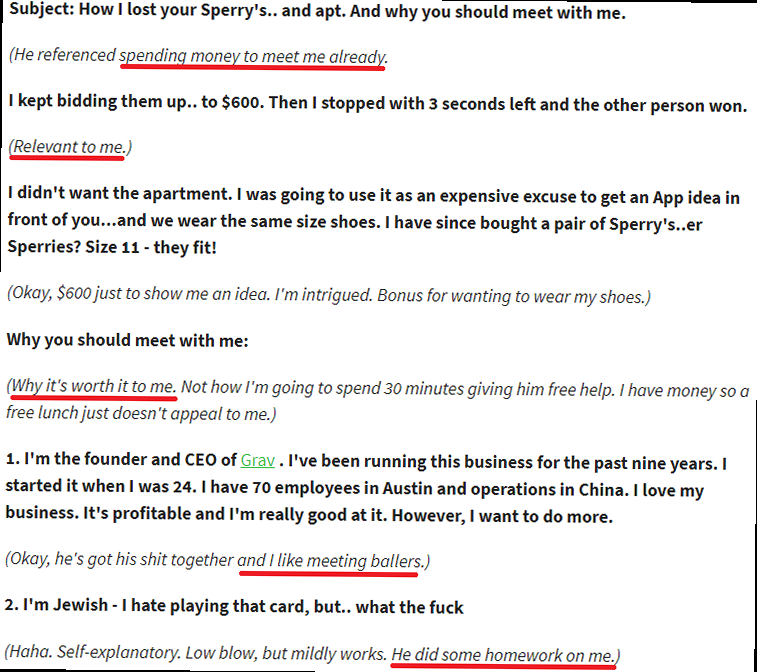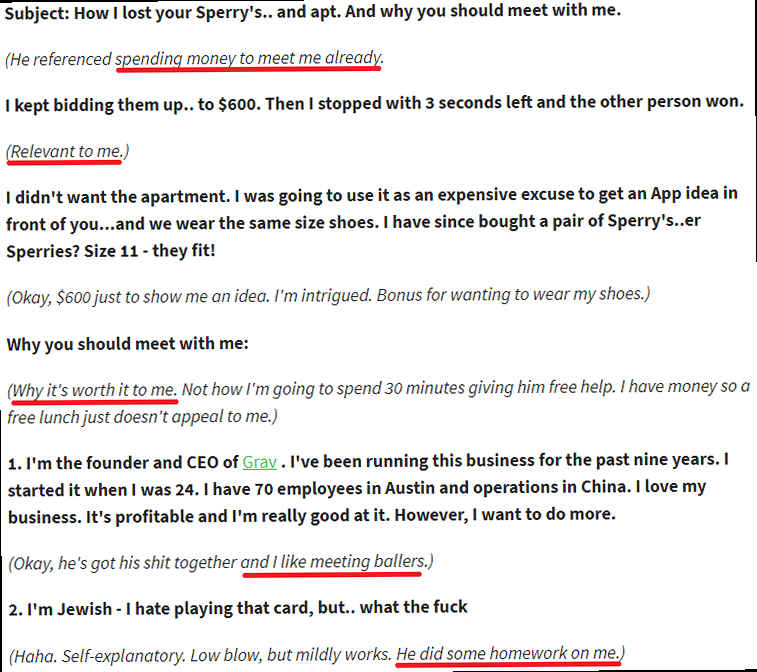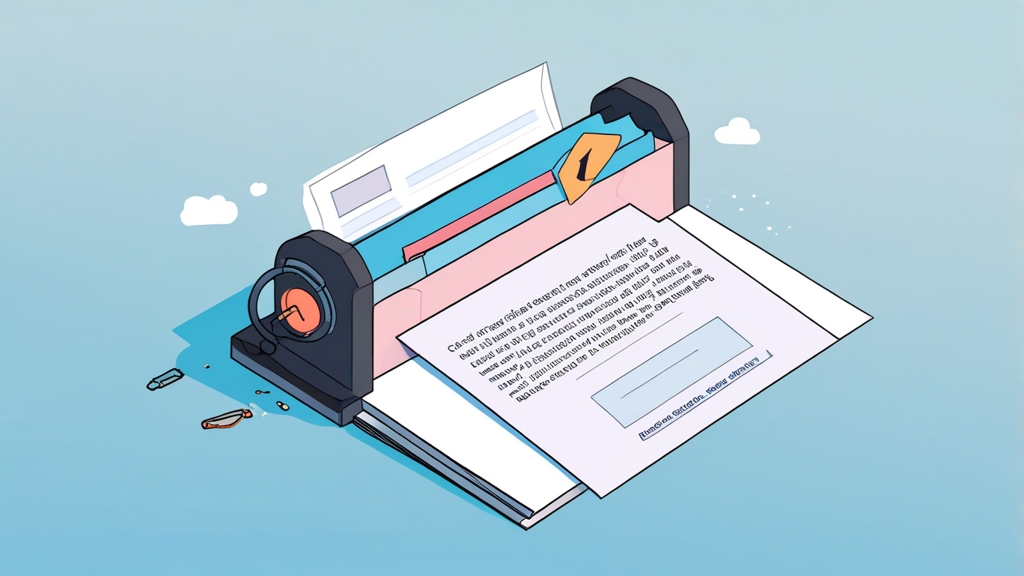Mastering Cold Email Copywriting: Templates and Tactics for Engagement
Crafting a successful cold email is an art and a science. It requires understanding your target audience, delivering a compelling message, and making a clear call to action. This article delves into the intricacies of cold email copywriting, providing actionable templates and proven tactics to boost your engagement rates and turn prospects into customers. We’ll explore different approaches, personalization strategies, and optimization techniques to help you master the art of the cold email.
- Understanding Your Audience: The Foundation of Effective Cold Email
- Crafting Compelling Subject Lines That Get Emails Opened
- Writing Body Copy That Converts: Structure and Persuasion
- Personalization at Scale: Making Each Email Feel Unique
- Analyzing and Optimizing: Turning Data into Improved Performance
Understanding Your Audience: The Foundation of Effective Cold Email

Developing Detailed Buyer Personas
Creating detailed buyer personas is a crucial step in understanding your audience. A buyer persona is a semi-fictional representation of your ideal customer based on market research and data about your existing customers. These personas should include demographic information, job responsibilities, pain points, goals, and preferred communication channels. The more detailed your personas, the better equipped you’ll be to craft compelling cold emails. Example 1: Let’s say you’re selling project management software. A buyer persona might be named “Sarah,” a project manager at a mid-sized marketing agency. Her pain points include: difficulty tracking tasks across multiple teams, missed deadlines due to poor communication, and time wasted on manual reporting. Her goals include: improving team collaboration, increasing project efficiency, and delivering projects on time and within budget. Understanding Sarah’s pain points and goals allows you to tailor your cold email to directly address her needs. Example 2: Another buyer persona could be “David,” a VP of Engineering at a SaaS startup. David’s challenges involve: scaling his engineering team effectively, maintaining code quality during rapid growth, and ensuring alignment between engineering efforts and business objectives. His goals include: attracting and retaining top engineering talent, improving software development velocity, and reducing technical debt. A cold email targeting David should focus on how your product can help him achieve these specific goals.Leveraging Social Media for Audience Insights
Social media platforms like LinkedIn, Twitter, and industry-specific forums are goldmines for audience insights. By actively listening to conversations, monitoring industry trends, and analyzing the content shared by your target audience, you can gain a deeper understanding of their needs and interests. Pay attention to the language they use, the topics they discuss, and the problems they’re trying to solve. This information can be invaluable in crafting personalized and relevant cold emails. Example 1: Use LinkedIn Sales Navigator to identify key decision-makers within target companies. Analyze their profiles to understand their professional background, skills, and interests. Look for common connections and shared experiences that you can leverage in your email. For instance, if you both attended the same university, mentioning it in your email can create an instant connection. Example 2: Monitor relevant hashtags and keywords on Twitter to identify trending topics and pain points within your target industry. Engage in conversations, share valuable insights, and identify potential prospects who are actively seeking solutions to their challenges. For example, if you’re selling cybersecurity solutions, you might monitor hashtags like #cybersecurity, #dataleak, or #ransomware to identify companies that are experiencing security breaches or looking for ways to improve their security posture.Analyzing Existing Customer Data
If you already have existing customers, their data can provide valuable insights into your target audience. Analyze customer demographics, purchase history, customer support tickets, and survey responses to identify common patterns and trends. What are the key challenges that your customers are facing? What are the features that they value most in your product? How do they use your product to achieve their goals? Answering these questions can help you refine your buyer personas and tailor your cold emails to resonate with a broader audience. Example 1: Analyze your customer support tickets to identify common pain points and frequently asked questions. This information can help you anticipate the challenges that your prospects are likely to face and proactively address them in your cold emails. For example, if you notice that many customers are struggling with a particular feature of your product, you can create a short video tutorial that demonstrates how to use it effectively and include a link to the video in your email. Example 2: Segment your existing customers based on their industry, company size, or job title. Analyze the purchase history of each segment to identify the products or services that they are most likely to purchase. This information can help you tailor your cold emails to promote the products or services that are most relevant to each segment. For example, if you notice that customers in the healthcare industry are more likely to purchase your HIPAA-compliant security solutions, you can create a targeted email campaign that focuses on the benefits of these solutions for healthcare organizations. By dedicating time and effort to understanding your audience, you’ll be well-positioned to craft cold emails that are relevant, personalized, and compelling. This, in turn, will lead to higher open rates, engagement rates, and ultimately, more conversions.Crafting Compelling Subject Lines That Get Emails Opened

Personalization and Relevance
Personalized subject lines are significantly more likely to be opened than generic ones. Use the information you’ve gathered about your target audience to tailor your subject lines to their specific interests and needs. Referencing their company name, job title, or a recent achievement can instantly grab their attention and make them feel like you’ve done your research. Example 1: Instead of a generic subject line like “Improving Your Business,” try something like “[Company Name] – Streamlining Your Project Workflow.” This subject line is personalized and directly addresses a potential pain point that the recipient might be experiencing. Example 2: If you know the recipient recently published an article or gave a presentation, you could use a subject line like “Congrats on the [Article/Presentation]! A thought on [Topic].” This shows that you’re paying attention and are genuinely interested in their work.Creating a Sense of Urgency and Curiosity
Subject lines that create a sense of urgency or curiosity can also be highly effective. However, it’s important to use this tactic sparingly and avoid being overly sensational or misleading. The goal is to pique the recipient’s interest without resorting to clickbait tactics. Highlighting a limited-time offer or hinting at a valuable piece of information can incentivize them to open your email. Example 1: “Exclusive Offer: [Your Product/Service] at 20% Off – Ends This Week!” This subject line creates a sense of urgency by highlighting a limited-time offer. Example 2: “A Quick Question About [Industry/Topic] That Could Save You Time/Money.” This subject line creates curiosity by hinting at a valuable piece of information that the recipient might be interested in.Keeping it Short and Sweet
In today’s mobile-first world, it’s crucial to keep your subject lines short and sweet. Many email clients truncate long subject lines, so you want to make sure that the most important information is visible at a glance. Aim for a subject line length of around 30-50 characters to ensure that it’s fully displayed on most devices. Get straight to the point and clearly convey the value proposition of your email. Example 1: Instead of “Are You Looking for a Solution to Improve Your Team’s Communication and Collaboration?” try “Improve Team Collaboration in [Industry].” Example 2: Instead of “We Can Help You Optimize Your Website for Higher Search Engine Rankings,” try “SEO Optimization for [Company Name].” Expert Tip: A/B test different subject lines to see which ones perform best with your target audience. Experiment with different personalization techniques, urgency cues, and subject line lengths to optimize your open rates. Use email marketing platforms like Mailchimp or Sendinblue to track the performance of your subject lines and identify winning formulas. Here’s a comparison table illustrating the effectiveness of different subject line approaches:| Subject Line Type | Example | Pros | Cons |
|---|---|---|---|
| Generic | Improving Your Business | Simple, broad appeal | Low open rates, lacks personalization |
| Personalized | [Company Name] – Streamlining Project Workflow | Higher open rates, shows research | Requires audience research |
| Urgent | Exclusive Offer: 20% Off – Ends This Week! | Creates immediate action | Can be perceived as spammy if overused |
| Curious | A Quick Question About [Industry] That Could Save You Time | Intriguing, piques interest | Needs to deliver on the promise |
| Short & Sweet | SEO Optimization for [Company Name] | Mobile-friendly, easy to understand | May lack detail |
Writing Body Copy That Converts: Structure and Persuasion
The body copy of your cold email is where you have the opportunity to truly connect with your prospect, demonstrate the value you offer, and persuade them to take action. A well-structured and persuasive body copy is essential for converting cold leads into warm prospects. It’s not enough to simply introduce yourself and your product; you need to clearly articulate the benefits of working with you and make it easy for the recipient to understand why they should care.The AIDA Framework: Attention, Interest, Desire, Action
The AIDA framework is a classic marketing model that provides a useful structure for crafting effective cold email body copy. It stands for:- Attention: Grab the recipient’s attention in the opening sentence.
- Interest: Build interest by highlighting a relevant problem or opportunity.
- Desire: Create desire by presenting your solution and its benefits.
- Action: Prompt the recipient to take a specific action.
- Attention: “Hi [Name], I noticed you’re doing great work in the [Industry] space.”
- Interest: “However, I also noticed your content could be driving more leads with a few strategic tweaks.”
- Desire: “We specialize in helping businesses like yours increase organic traffic and generate more qualified leads through targeted content marketing.”
- Action: “Would you be open to a quick 15-minute call to discuss your content strategy?”
- Attention: “Hi [Name], I understand you’re responsible for sales performance at [Company Name].”
- Interest: “Are your sales reps spending too much time on manual tasks, rather than closing deals?”
- Desire: “Our sales automation software streamlines the sales process, allowing your reps to focus on high-value activities and close more deals.”
- Action: “I’d be happy to schedule a demo to show you how our software can improve your sales productivity.”
Highlighting Benefits, Not Just Features
It’s crucial to focus on the benefits of your product or service, rather than just listing its features. Prospects are more interested in how your solution can solve their problems and improve their lives. Translate features into tangible benefits that resonate with their specific needs and goals. Use clear and concise language to explain how your solution can help them save time, increase revenue, or reduce costs. Example 1: Instead of saying “Our software has advanced reporting capabilities,” try “Our software provides you with real-time data and insights that will help you make informed business decisions and optimize your marketing campaigns.” Example 2: Instead of saying “Our product is highly customizable,” try “Our product can be tailored to your specific needs and workflows, ensuring a seamless integration with your existing systems and processes.”The Power of Social Proof
Including social proof in your cold email can significantly increase your credibility and build trust with your prospects. Share testimonials from satisfied customers, case studies demonstrating the success of your product or service, or statistics highlighting your company’s achievements. Social proof helps to validate your claims and demonstrate that you’re a trustworthy and reliable partner. Example 1: “We’ve helped companies like [Company Name] increase their website traffic by 40% in just three months.” Example 2: “[Customer Name], CEO of [Company Name], says: ‘Since implementing your solution, we’ve seen a significant improvement in our team’s productivity and collaboration.'” By crafting a well-structured and persuasive body copy that focuses on benefits, incorporates social proof, and prompts action, you can significantly increase your chances of converting cold leads into paying customers.Personalization at Scale: Making Each Email Feel Unique
In today’s digital landscape, personalization is no longer a “nice-to-have” but a necessity. Prospects are bombarded with generic marketing messages every day, and they’re increasingly likely to ignore emails that don’t feel relevant or personalized. Personalization at scale is the key to breaking through the noise and making a lasting impression. It involves leveraging data and technology to deliver customized experiences to each individual prospect, even when sending out large volumes of emails. This doesn’t mean writing each email from scratch, but rather using dynamic fields and segmentation to tailor your message to each recipient’s specific needs and interests.Dynamic Fields and Custom Variables
Dynamic fields and custom variables allow you to automatically insert personalized information into your emails. This can include the recipient’s name, company name, job title, industry, or any other relevant data that you have about them. Using dynamic fields can make your emails feel more personal and relevant, even when you’re sending them to a large audience. Example 1: In your email marketing platform (e.g., Mailchimp, HubSpot), you can use merge tags to insert personalized information. For example, you can use the `*|FNAME|*` merge tag to insert the recipient’s first name into the email body. The email would appear as: “Hi John, I noticed you’re the Marketing Manager at Acme Corp…” Example 2: Using custom variables to personalize the subject line: “Hi *|FNAME|*, A quick question about marketing at *|COMPANY|*”. Ensure the data is accurate and properly formatted in your CRM or email marketing platform.Segmentation and Targeting
Segmentation involves dividing your audience into smaller groups based on shared characteristics, such as industry, company size, job title, or interests. Targeting involves tailoring your email messages to the specific needs and interests of each segment. By segmenting your audience and targeting your messages, you can ensure that your emails are more relevant and engaging. Example 1: Create a segment of prospects who are in the SaaS industry. Tailor your email message to address the specific challenges and opportunities that SaaS companies face. Mention relevant case studies or success stories from other SaaS clients. Example 2: Segment based on job title, such as “Marketing Managers” and “Sales Directors.” Craft different email messages for each segment, highlighting the benefits of your product or service that are most relevant to their specific roles and responsibilities.Research and Contextualization
While dynamic fields and segmentation are important, they’re not enough to create truly personalized emails. You also need to do your research and add contextual information to your messages. This might involve researching the recipient’s company, their recent achievements, or their involvement in industry events. Adding contextual information shows that you’ve done your homework and that you’re genuinely interested in their business. Example 1: “I noticed you recently launched a new product, [Product Name]. Congratulations! I’m curious to know what marketing strategies you’re using to promote it.” Example 2: “I saw you spoke at the [Industry Conference] last week. Your presentation on [Topic] was very insightful. I particularly appreciated your point about [Specific Point].” “Personalization isn’t about inserting a name; it’s about delivering value and showing you understand their world.” – Expert Quote By leveraging dynamic fields, segmentation, and contextual information, you can create personalized cold emails that resonate with your prospects and drive higher engagement rates. Remember to always prioritize relevance and value over generic greetings and sales pitches.Analyzing and Optimizing: Turning Data into Improved Performance
Sending cold emails is not a “set it and forget it” activity. To achieve consistently positive results, it’s essential to track key metrics, analyze the data, and continuously optimize your approach. By monitoring the performance of your campaigns, you can identify what’s working and what’s not, and make informed adjustments to improve your open rates, click-through rates, and conversion rates. This iterative process of analysis and optimization is the key to unlocking the full potential of your cold email strategy. Without proper analysis, you’re essentially flying blind.Key Metrics to Track
There are several key metrics that you should track to assess the performance of your cold email campaigns:- Open Rate: The percentage of recipients who opened your email. A higher open rate indicates that your subject line is compelling and relevant.
- Click-Through Rate (CTR): The percentage of recipients who clicked on a link in your email. A higher CTR indicates that your body copy is engaging and your call to action is clear.
- Conversion Rate: The percentage of recipients who completed a desired action, such as booking a demo, requesting a quote, or making a purchase. A higher conversion rate indicates that your email is effective at driving results.
- Bounce Rate: The percentage of emails that could not be delivered to the recipient’s inbox. A high bounce rate can indicate that you have outdated or inaccurate email addresses.
- Unsubscribe Rate: The percentage of recipients who unsubscribed from your email list. A high unsubscribe rate can indicate that your emails are not relevant or that you’re sending them too frequently.
- Reply Rate: The percentage of recipients who replied to your email. A high reply rate indicates that your email is engaging and encourages interaction.
